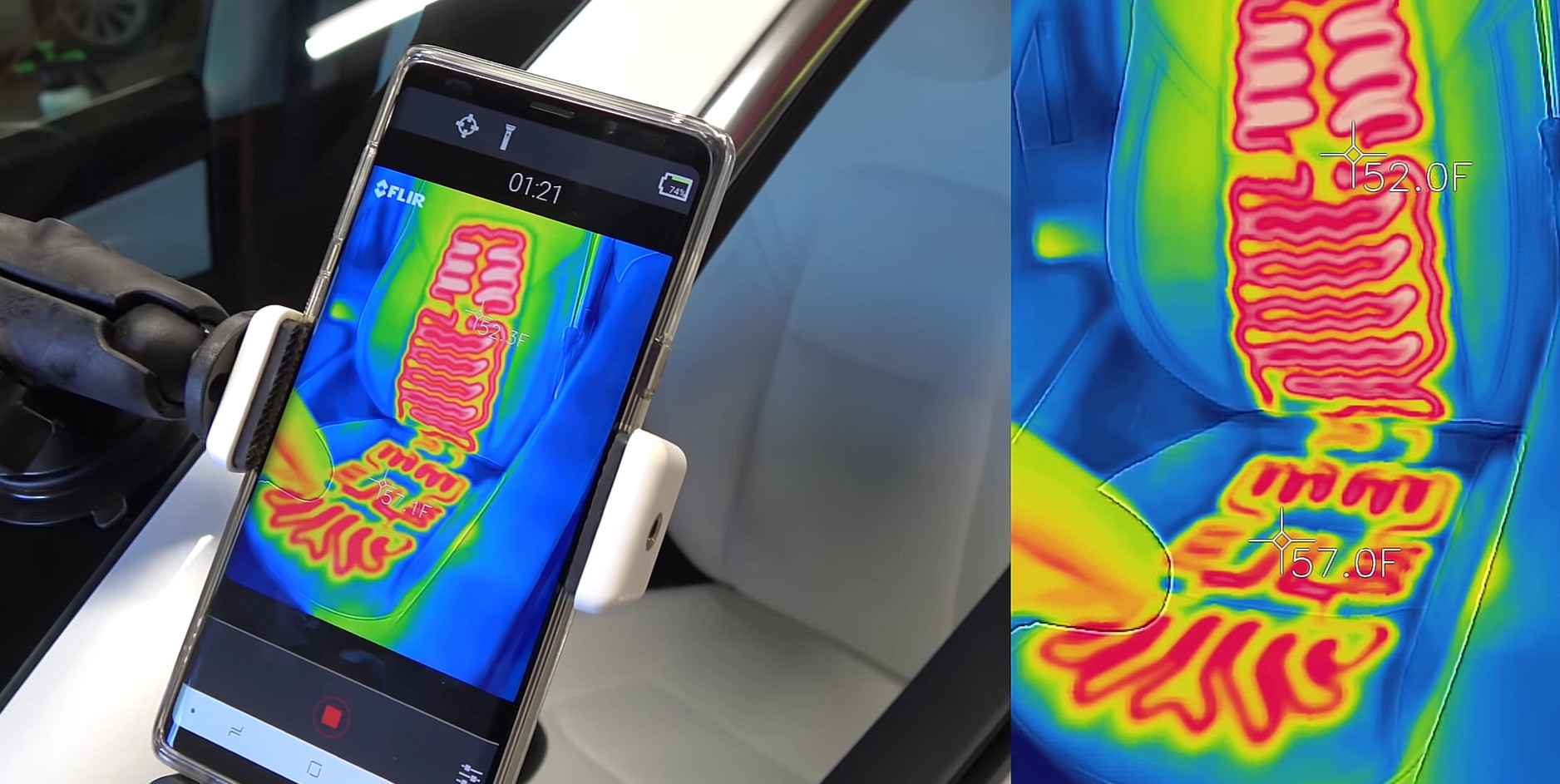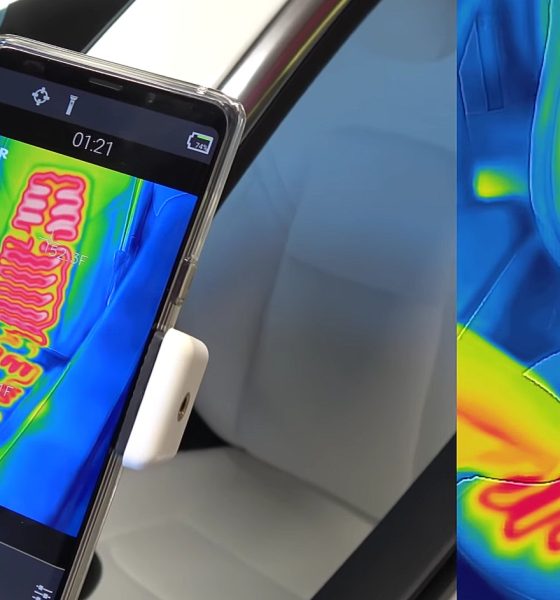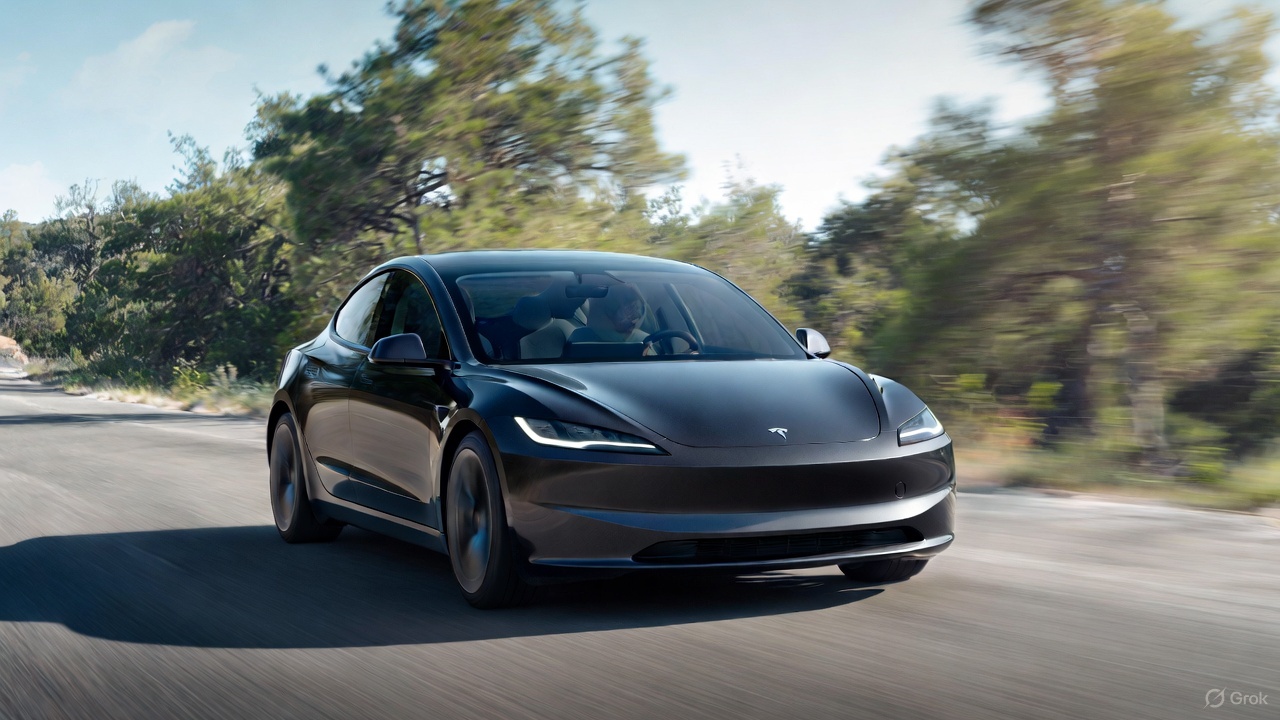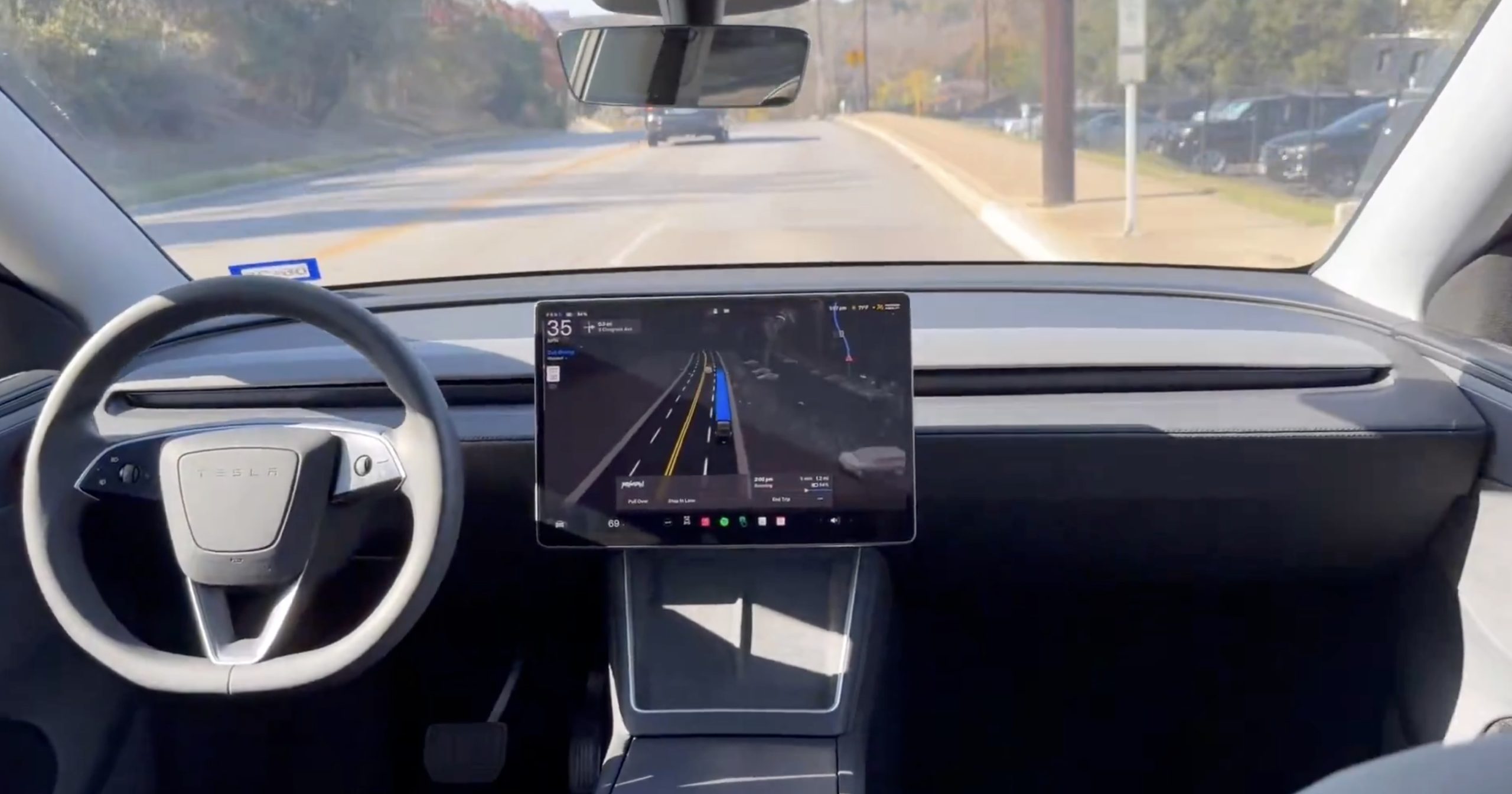

News
Tesla Model 3 and Model S heated seats compared in temperature test showdown
One of the best things about Tesla’s vehicles is their capability to improve over time. Through over-the-air updates, Tesla’s electric cars receive safety enhancements, fun Easter Eggs, new convenience features, and even additional driver-assist capabilities free of charge. These improvements have been particularly notable in the Model 3, as the vehicle has progressively gotten better since it started rolling off the assembly line back in July 2017.
The Tesla Model 3 is the company’s most affordable vehicle today, with its range-topping Performance variant costing less than a Model S 100D. Since it was released, several improvements to the vehicle have been rolled out, from shorter braking distances (courtesy of Consumer Reports) to rear seat warmers. In the case of the latter, the warmers were even a point of discussion among Tesla owners prior to their activation, considering that the feature was absent on the vehicle when it was initially delivered to reservation holders.
By March last year, though, Tesla introduced heated rear seats for the Model 3, making the feature universal for all the cars in its lineup. Last December, Tesla released an update that made seat heating even more convenient, allowing owners to activate and set their vehicles’ seat warmers from the mobile app. For the company’s flagship cars — the Model S and Model X — even the steering wheel heaters could be activated from the Tesla app.
Inasmuch as the heated seats of the Model 3 are a welcome feature, though, it is still quite interesting to see how it stacks up against the excellent seat heaters in the more premium, albeit older, Model S. Having both cars, Tesla owner-enthusiast Erik Strait opted to conduct a test to compare the Model 3 and Model S’ seat heaters using a FLIR thermal camera. Needless to say, the test results were quite compelling.
As could be seen in the video, the Model 3’s heaters actually work well. Five minutes after activating the feature on the app, the Model 3’s seat heaters registered 73.3 degrees Fahrenheit on the back and 81.5 F on the bottom. That’s not too far from the Model S, which registered 69.2 degrees Fahrenheit on the back and 84.6 F at the bottom after 5 minutes of activation.
That said, the Model S’ heaters appear to have an advantage over the Model 3, thanks to the distribution of heat on the seat itself. The Model 3’s seat heater is pretty straightforward, with the changes in temperature being centered on the areas directly above the heating element. Thus, while the center portions of the seat warmed up well, other portions such as the sides remained noticeably cooler. The Model S’s heating element, on the other hand, appeared to be well-distributed, resulting in a more even temperature across the entire seat.
There would be more improvements coming to the Model 3 and Model S in the coming months. In the case of the flagship sedan, speculations are high that Tesla might update the vehicles’ batteries to newer, larger 2170 cells, which the company is using for the Model 3. With 2170 cells and more advanced cooling systems, the Model S would be even more impressive than it is today, despite being a benchmark for premium electric vehicles for years.
Watch Erik’s comparison of the Tesla Model 3 and the Model S’ seat heaters in the video below.

News
Tesla starts showing how FSD will change lives in Europe
Local officials tested the system on narrow country roads and were impressed by FSD’s smooth, human-like driving, with some calling the service a game-changer for everyday life in areas that are far from urban centers.

Tesla has launched Europe’s first public shuttle service using Full Self-Driving (Supervised) in the rural Eifelkreis Bitburg-Prüm region of Germany, demonstrating how the technology can restore independence and mobility for people who struggle with limited transport options.
Local officials tested the system on narrow country roads and were impressed by FSD’s smooth, human-like driving, with some calling the service a game-changer for everyday life in areas that are far from urban centers.
Officials see real impact on rural residents
Arzfeld Mayor Johannes Kuhl and District Administrator Andreas Kruppert personally tested the Tesla shuttle service. This allowed them to see just how well FSD navigated winding lanes and rural roads confidently. Kruppert said, “Autonomous driving sounds like science fiction to many, but we simply see here that it works totally well in rural regions too.” Kuhl, for his part, also noted that FSD “feels like a very experienced driver.”
The pilot complements the area’s “Citizen Bus” program, which provides on-demand rides for elderly residents who can no longer drive themselves. Tesla Europe shared a video of a demonstration of the service, highlighting how FSD gives people their freedom back, even in places where public transport is not as prevalent.
What the Ministry for Economic Affairs and Transport says
Rhineland-Palatinate’s Minister Daniela Schmitt supported the project, praising the collaboration that made this “first of its kind in Europe” possible. As per the ministry, the rural rollout for the service shows FSD’s potential beyond major cities, and it delivers tangible benefits like grocery runs, doctor visits, and social connections for isolated residents.
“Reliable and flexible mobility is especially vital in rural areas. With the launch of a shuttle service using self-driving vehicles (FSD supervised) by Tesla in the Eifelkreis Bitburg-Prüm, an innovative pilot project is now getting underway that complements local community bus services. It is the first project of its kind in Europe.
“The result is a real gain for rural mobility: greater accessibility, more flexibility and tangible benefits for everyday life. A strong signal for innovation, cooperation and future-oriented mobility beyond urban centers,” the ministry wrote in a LinkedIn post.
News
Tesla China quietly posts Robotaxi-related job listing
Tesla China is currently seeking a Low Voltage Electrical Engineer to work on circuit board design for the company’s autonomous vehicles.

Tesla has posted a new job listing in Shanghai explicitly tied to its Robotaxi program, fueling speculation that the company is preparing to launch its dedicated autonomous ride-hailing service in China.
As noted in the listing, Tesla China is currently seeking a Low Voltage Electrical Engineer to work on circuit board design for the company’s autonomous vehicles.
Robotaxi-specific role
The listing, which was shared on social media platform X by industry watcher @tslaming, suggested that Tesla China is looking to fill the role urgently. The job listing itself specifically mentions that the person hired for the role will be working on the Low Voltage Hardware team, which would design the circuit boards that would serve as the nervous system of the Robotaxi.
Key tasks for the role, as indicated in the job listing, include collaboration with PCB layout, firmware, mechanical, program management, and validation teams, among other responsibilities. The role is based in Shanghai.
China Robotaxi launch
China represents a massive potential market for robotaxis, with its dense urban centers and supportive policies in select cities. Tesla has limited permission to roll out FSD in the country, though despite this, its vehicles have been hailed as among the best in the market when it comes to autonomous features. So far, at least, it appears that China supports Tesla’s FSD and Robotaxi rollout.
This was hinted at in November, when Tesla brought the Cybercab to the 8th China International Import Expo (CIIE) in Shanghai, marking the first time that the autonomous two-seater was brought to the Asia-Pacific region. The vehicle, despite not having a release date in China, received a significant amount of interest among the event’s attendees.
Elon Musk
Elon Musk and Tesla AI Director share insights after empty driver seat Robotaxi rides
The executives’ unoccupied tests hint at the rapid progress of Tesla’s unsupervised Robotaxi efforts.

Tesla CEO Elon Musk and AI Director Ashok Elluswamy celebrated Christmas Eve by sharing personal experiences with Robotaxi vehicles that had no safety monitor or occupant in the driver’s seat. Musk described the system’s “perfect driving” around Austin, while Elluswamy posted video from the back seat, calling it “an amazing experience.”
The executives’ unoccupied tests hint at the rapid progress of Tesla’s unsupervised Robotaxi efforts.
Elon and Ashok’s firsthand Robotaxi insights
Prior to Musk and the Tesla AI Director’s posts, sightings of unmanned Teslas navigating public roads were widely shared on social media. One such vehicle was spotted in Austin, Texas, which Elon Musk acknowleged by stating that “Testing is underway with no occupants in the car.”
Based on his Christmas Eve post, Musk seemed to have tested an unmanned Tesla himself. “A Tesla with no safety monitor in the car and me sitting in the passenger seat took me all around Austin on Sunday with perfect driving,” Musk wrote in his post.
Elluswamy responded with a 2-minute video showing himself in the rear of an unmanned Tesla. The video featured the vehicle’s empty front seats, as well as its smooth handling through real-world traffic. He captioned his video with the words, “It’s an amazing experience!”
Towards Unsupervised operations
During an xAI Hackathon earlier this month, Elon Musk mentioned that Tesla owed be removing Safety Monitors from its Robotaxis in Austin in just three weeks. “Unsupervised is pretty much solved at this point. So there will be Tesla Robotaxis operating in Austin with no one in them. Not even anyone in the passenger seat in about three weeks,” he said. Musk echoed similar estimates at the 2025 Annual Shareholder Meeting and the Q3 2025 earnings call.
Considering the insights that were posted Musk and Elluswamy, it does appear that Tesla is working hard towards operating its Robotaxis with no safety monitors. This is quite impressive considering that the service was launched just earlier this year.








